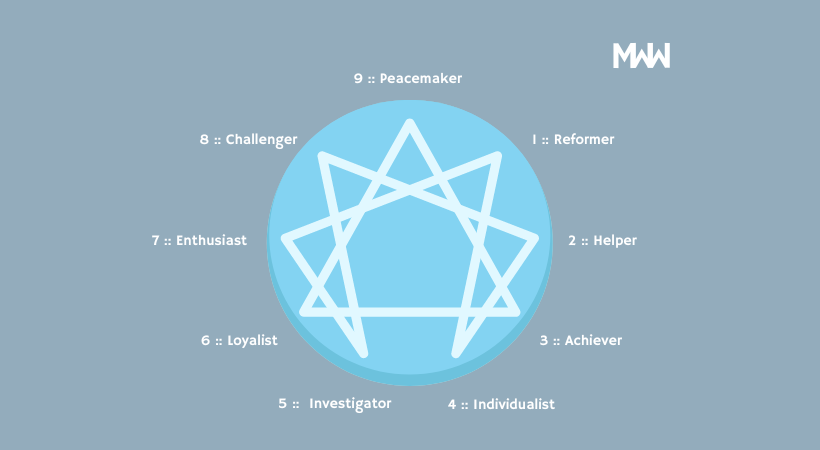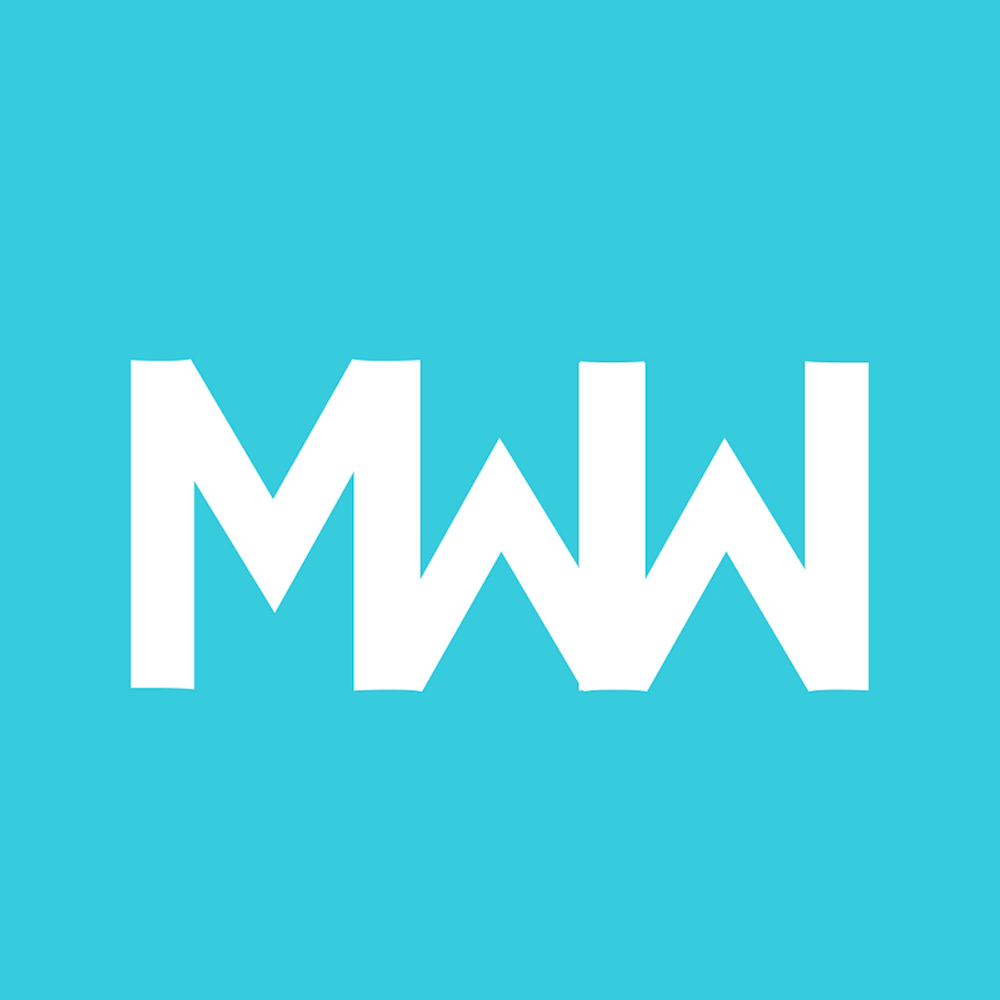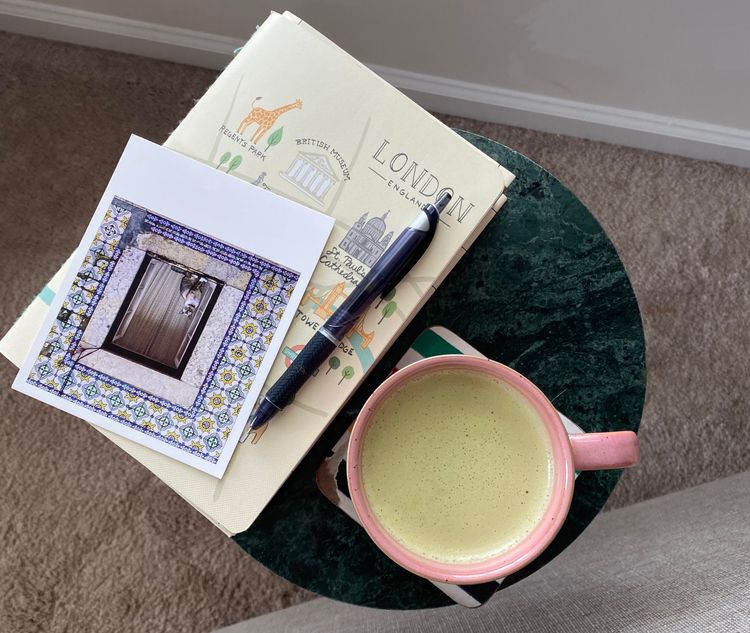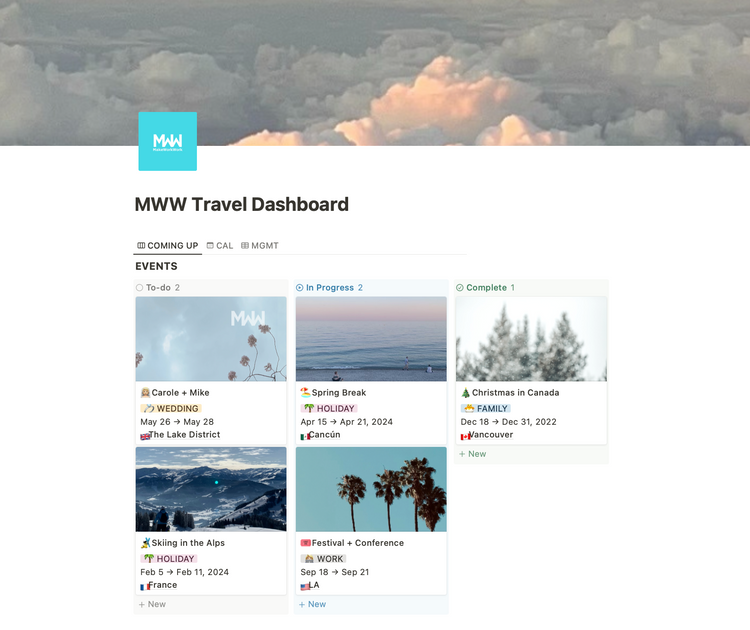The Enneagram: A Shortcut to Clearer Language and Better Collaboration

Using the Enneagram personality framework has provided language to articulate our own personality traits and helped us own better up to both positive and negative characteristics. This elevated our collaboration by an order of magnitude. Here's more about the Enneagram, and how we use it.
Years ago, at work, a manager had us do a personality test I hadn’t heard of before — the Enneagram.
I love learning about myself, so I was excited to give it a go. When I finally landed at the end of the test and got my results, I was blown away. This personality test was describing things about me I’d never had the language to define, and even going so far as to say things I know about myself that I was embarrassed about and didn’t want others to know.
This is the power of the Enneagram. It can highlight some very deep and intimate parts of who you are in a very clear way. The enneagram isn’t just another personality test; it’s a test of what motivates someone. And as I’ve learned, if you can figure out what motivates you, a lot of things become easier for you in your work and life.
Here’s more about the Enneagram and how Habbi and I rely on it.

About the Enneagram
The Enneagram is a typology of nine interconnected personality types based on personal motivations. It is well known for having a depth of knowledge that resonates with individuals and for being a helpful resource for relationships, both professional and personal.
The nine Enneagram types are:
- Enneagram Type 1: The Reformer. The Rational, Idealistic Type: Principled, Purposeful, Self-Controlled, and Perfectionistic.
- Enneagram Type 2: The Helper. The Caring, Interpersonal Type: Generous, Demonstrative, People-Pleasing, and Possessive.
- Enneagram Type 3: The Achiever. The Success-Oriented, Pragmatic Type: Adaptable, Excelling, Driven, and Image-Conscious.
- Enneagram Type 4: The Individualist. The Sensitive, Introspective Type: Expressive, Dramatic, Self-Absorbed, and Temperamental.
- Enneagram Type 5: The Investigator. The Intense, Cerebral Type: Perceptive, Innovative, Secretive, and Isolated.
- Enneagram Type 6: The Committed, Security-Oriented Type: Engaging, Responsible, Anxious, and Suspicious.
- Enneagram Type 7: The Enthusiast. The Busy, Variety-Seeking Type: Spontaneous, Versatile, Acquisitive, and Scattered.
- Enneagram Type 8: The Challenger. The Powerful, Dominating Type: Self-Confident, Decisive, Willful, and Confrontational.
- Enneagram Type 9: The Peacemaker. The Easygoing, Self-Effacing Type: Receptive, Reassuring Agreeable, and Complacent.
How to figure out your Enneagram type
There are a few ways to figure out your Enneagram, the most popular is to take an online test. The most reputable test is the Rheti by the Enneagram Institute, though it’s a paid test. The best free version is this Enneagram test by Chrystal Knows.
It’s important to note that the tests and quizzes aren’t always accurate, and they will give you a score on several of the types. From there, you need to do the work to figure out which type most resonated with you. It’s worthwhile to read several of the types that you scored highly on to reflect on which might be more accurate.
Some types are more difficult to figure out than others. Type nine, for example, is known as the Crown of the Enneagram and it can be difficult to pin down this type since they have attributes from many other types.
One thing that can help define your Enneagram is to look at how your Enneagram type reacts in relation to other types. If there’s someone close to you who is certain of their type, you can look at your type in relation to theirs and see if you spot common themes from your relationship.
How to figure out how your type is in relationships with other types
The Enneagram is extra powerful as a personality framework because there has been a lot of work to figure out how each type feels and acts in relation to other types. From each type’s Enneagram page on the Enneagram Institute you can scroll down to see “Compatibility with Other Types.”
The blurbs written will give you an overview of what each type brings to the relationship and highlight potential trouble spots or issues. Each Enneagram type has both healthy and unhealthy levels, so it’s key to remember that collaboration with a certain type might be different depending on their Level of Development and whether or not they are at unhealthy, average, or healthy levels.
How the Enneagram has leveled up our self-knowledge and collaboration
Over the years, learning more about our own Enneagram types has taught Habbi and me loads about ourselves and also how we work together. It’s become an invaluable tool to us and has helped us take our collaboration to a new level of understanding because we knew more about ourselves and each other.
Our types
Habbi is a seven, the Enthusiast, and I’m a three, the Achiever. Here’s more from Habbi on being a seven:
Type sevens I sometimes shorthand as the 'social butterfly' type. This is someone who thrives on a packed calendar, who loves being out and about with people – and is at their best when interacting with the outside world. They love being busy, and they never stop moving. However, the downside is that they can overextend themselves, and that's when the structure collapses. What really made me recognize this as my type is when I looked at the healthy and unhealthy levels: seven at a healthy level is appreciative of everyone and everything – very 'smell the roses' type of thing; and when in a bad place, sevens become critical and can fall into behaviors of excess. I've definitely been on both sides of this, and it's incredibly rewarding for me to know that: quiet time means I'm doing well and am content – when I feel critical and overcommitted – that's a bad sign.
Threes, meanwhile, are the achiever; they are very success-oriented, ambitious, and focused on developing their own strengths and capabilities. A lot of things clicked into place for me when I discovered I was a three — I’ve long loved having goals, and the Enneagram helped me realize that having clear goals to work towards will always be meaningful to me. Threes also enjoy motivating others “to greater personal achievements than others thought they were capable of.” This has been very true for me and helped me crystalize why I love spending time building out resources for others to advance in their careers. On the flip side, threes can be overly competitive, workaholics, and too concerned about how others perceive them. Knowing both the highlights and the lowlights of my own personality to catch myself if I’m leaning into the more negative side of myself to pull myself back towards the good side of being someone driven for advancement.
How the Enneagram elevated our collaboration
Habbi and I learned after discovering our Enneagrams that sevens and threes are “an almost magical couple” that brings optimism, an orientation towards and future, and a sense of possibility to their relationships and projects. This has been very true for us with the podcast.
Each relationship also naturally has its trouble spots. For threes and sevens, the Enneagram Institute mentions, “Neither type wants to talk about their shortcomings, failures, or negative feelings and so these topics tend to be avoided for as long as possible.”
The Enneagram helpfully gave us clear language for parts of who we are. This sounds like it’s quite simple, but this higher level of understanding of ourselves and each other means that we understand where the other person is coming from and why. This shared language then gives us shortcuts when we run into road black to quickly explain what’s going on and how it relates to who we are.
In the end, we are stronger collaborators as we understand the dynamic of our personalities better – the benefits and the pitfalls — and can use shared language from the Enneagram
The Enneagram is just one of the personality frameworks we use. It is one that we’ve referenced the most because it’s so in-depth, but there are several others. Read about the other personality frameworks we use, and listen to us share more about the Enneagram in MWW15 and MWW31. If you've found a type you identify with, we'd love to hear about which one it is and if it has served you in some way!






Member discussion